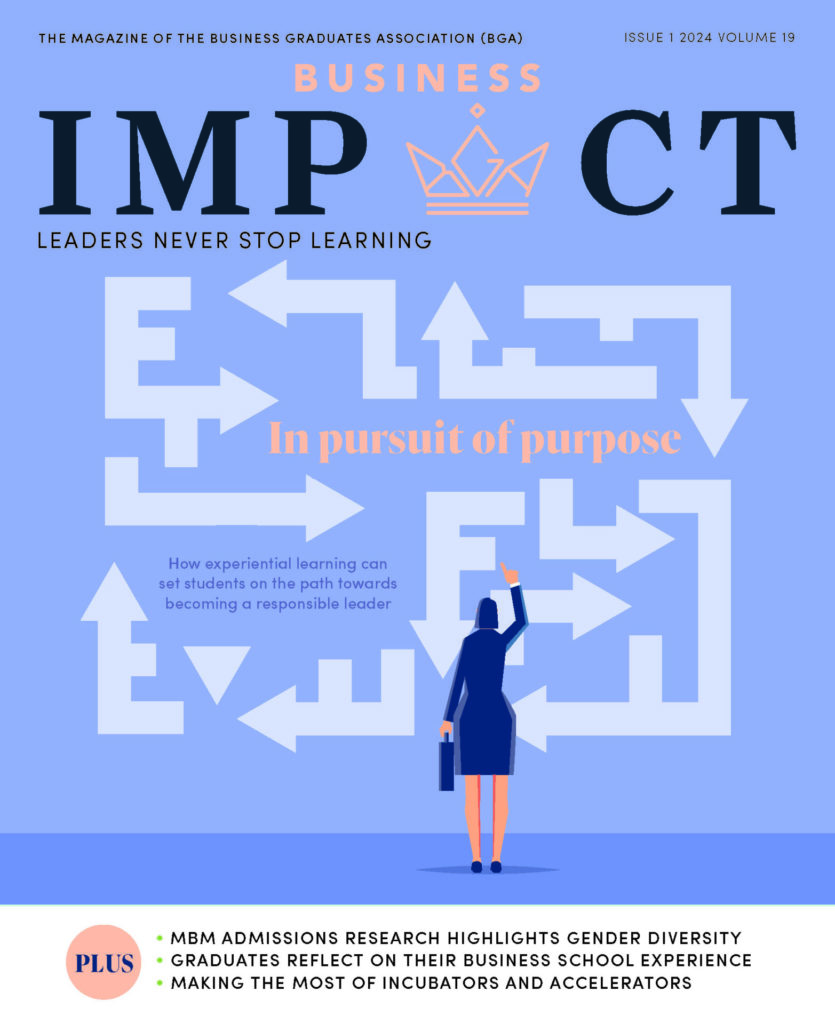Let us assume that business professionals’ conceptions of the world are formed primarily in the following two ways:
(A) By engaging with their environment – in other words, how they experience technical and digital devices, reading books and articles, using some software, googling or writing down their ideas in their everyday life.
(B) Based on their interactions and conversations with other agents – which would include anything from friends, research/study collaborators and programmers, to industry partners, customers and clients.
Taking this as our starting point, it can also be assumed that (B) is strongly dependent on, and influenced by, (A). In other words, (B) can be interpreted to be manifested based on (A) in different scenarios.
It is important to note that the notion business professionals have of the world are the linguistic outcomes of how they conceptualise it.
Logical analysis of a scenario
To better understand the dynamics involved, consider a professional business meeting between Simon and Ann.
Ann is the CEO of the company, ‘XYZ’, and Simon is the Senior Information Technology Manager at XYZ. Simon’s and Ann’s conceptions are in an important sense shared among them and, accordingly, must be synchronised among them to effectively communicate and interact when they both share their descriptions, justifications, questions, answers, and requests based on their own conceptions.
The two professionals must, therefore, form a mutual understanding of each other’s conceptions if they are to fulfil any communicative/interactive purpose successfully. Such purposes might include negotiating a favourable outcome; persuading each other; jointly investigating an open question; jointly initiating a technical project; jointly explaining an issue; jointly discovering a problem; or jointly making an agreement.
At this point, let’s imagine that the following conversation takes place between Simon and Ann, as part of their meeting:
Simon: ‘Let’s use Linux in our next project.’
Ann: ‘What is Linux?’
Simon: ‘Linux is a software operating system.’
Ann: ‘Ahhh! Good!’
In this simple scenario, Simon suggests the usage of Linux in one of their future technical projects, and Ann asks about Linux. Ann is looking forward to hearing a description (in the form of a sentence or a collection of a few sentences) from Simon. Responding to her request, Simon describes his conception of ‘Linux’ and, in fact, proposes a definition based on his conception of ‘Linux’.
By interpreting Simon’s description, Ann can conceptualise and recognise that Simon’s conception of ‘Linux’ is highly dependent on his conceptions of ‘software’ and ‘operating system’. She can therefore also focus on making her own conception of ‘Linux’ as well as on developing her existing conceptions of ‘software’ and ‘operating system’.
In fact, Simon’s conceptions here are hierarchically connected to each other. Such a hierarchical (or vertical logical) structure provides a strong logical backbone for the development of Ann’s knowledge of ‘Linux’.
To be more specific about their knowledge, Simon’s – and, subsequently, Ann’s – knowledge of ‘Linux’ is now simply redeveloped, as well as structured, based on the collections of conception involvements and of conception equalities in their minds, as well as on how either of them can declare their conceptions in their other descriptions.
Moreover, in the short conversation above, Simon has expressed the description ‘Linux is a software operating system’ in view of his knowledge – that is, structured and based on his conception involvement. Ann’s knowledge develops as a result and, accordingly, she proposes an extended description of her own conception.
It can be concluded that there is a dynamic interconnection between the descriptions offered by Simon and Ann. Such a dynamic relationship supports the development of Ann’s knowledge of ‘Linux’, ‘software’ and ‘operating system’ in the future.
Creative business conversations
It seems plausible that any business professional’s conceptions are the primary units of their knowledge and the basic materials from which their creative ideas are constructed and can be developed. Correspondingly, their conceptions are modelled and hierarchically serialised to shape meanings in their minds.
In their conversations, business professionals construct their own meanings with regards to their own conceptions. These constructed meanings become reflected in their personal and meaningful understandings. Business professionals must consider such meanings as the active and dynamic processes of knowledge construction. By constructing meanings in this way, business professionals become connected to each other’s constructed models of knowledge.
In my opinion, a creative business meeting is constructive based on the concepts of ‘conceptual development’ and ‘meaningful understanding construction’. In creative business conversations, meanings are interpreted to be related to the value, authentication, authenticity, and precision of what business professionals express.
Accordingly, the meaning of any conception is highly related to their interpretation, explanation, and comprehension of what has been expressed. In creative business conversations, any business professional must be permitted to express, explain, defend, prove, and justify his/her conceptions. In addition, all business professionals must be allowed to communicate their conceptions to each other, as well as to their community, to move towards the most appropriate meanings and, subsequently, towards the most proper meaningful understandings.








